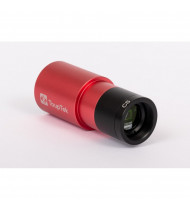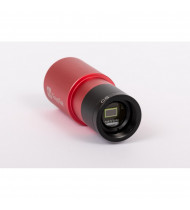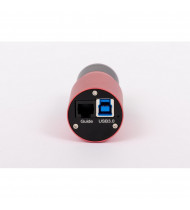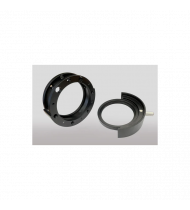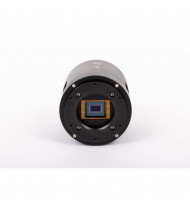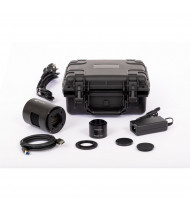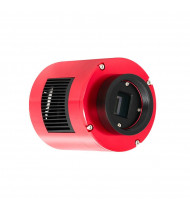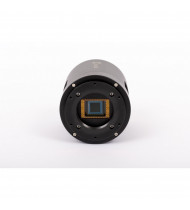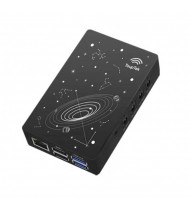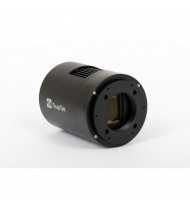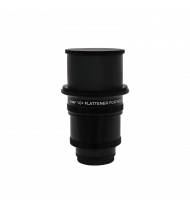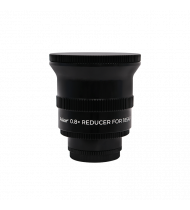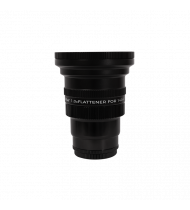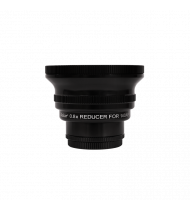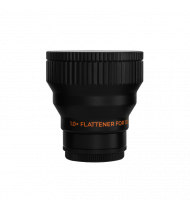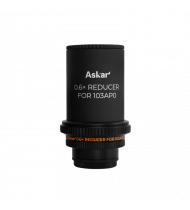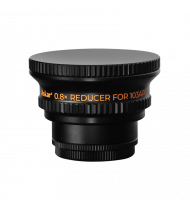Search results for 'midland nr 770 r c626 8011869116575'
ToupTek 224C Color
Regular Price: US$ 176.98
US$ 159.19
This color camera is perfect as an autoguider and as a planetary camera. The ToupTek 224 Color uses the IMX224 Color sensor, it has 1280x960 pixels while the pixel size is 3.75 μm. It provides 12 bit ADC, weighs only 90g and has a 31.8mm barrel!ToupTek 2210M Mono Camera
Regular Price: US$ 274.80
US$ 257.02
The small ToupTek 2210 offers optimal performance for planetary imaging and driving. Low readout noise, high dynamic range, peak QE>750%, AR protection window and much more! It uses the SMARTSENSE SC2210 1/1.8" sensor and has 1920x1080 pixels while the pixel size is 4.00 μm.ToupTek 678M Mono Camera
Regular Price: US$ 310.38
US$ 283.70
The small ToupTek 678M offers optimal performance for planetary imaging and driving. Low readout noise, high dynamic range, peak QE >83%, AR protection window and much more!
This camera weighs only 90g and has a 31.8mm barrel! 3840x2160 pixels while the pixel size is 2 μm.ToupTek Filter Drawer M54 2"
US$ 70.25This drawer is specifically designed for ToupTek PRO version cameras, however it can also be mounted on cameras with M54x0.75 thread such as the ASI6200 and 2400 series. Allows you to mount 2" filters inside the optical train. Thickness 20mmToupTek 585C PRO Color
Regular Price: US$ 683.90
US$ 621.65
The SONY IMX585 sensor has a diagonal of 12.1 mm and 2.9x2.9 micron pixels, the 1/1.2" format is a new, even more performing sensor, with 8.3MP and a resolution of 3840x2160.
With this sensor it is possible to photograph an entire cluster of galaxies and show the details of each one at the same time!
The chamber also features dual-stage TEC Cooling with a thermal delta equal to 40° real degrees.ZWO ASI 585 MC PRO Color
US$ 746.16The SONY IMX585 sensor has a diagonal of 9.08mm and 2.9x2.9 micron pixels, 1/1.2" format
With this sensor it is possible to photograph an entire cluster of galaxies and show the details of each one at the same time!
The chamber also features TEC Cooling with a thermal delta of the ambient temperature up to -35°.ToupTek 533C PRO Cooled Color CMOS Camera
Regular Price: US$ 884.89
US$ 799.52
The SONY IMX533 sensor has a diagonal of 16.0 mm and 3.76x3.76 micron pixels, the 1" format is a new, even more performing sensor, with 9.07MP and a resolution of 3008x3008.
With this sensor it is possible to photograph an entire cluster of galaxies and show the details of each one at the same time!
The camera also features dual-stage TEC Cooling with a thermal delta equal to 40° real degrees.ToupTek AstroStation Smart Device
US$ 390.42ASTROSTATION is a WiFi smart device that allows you to control all ToupTek, ZWO, QHY and PlayerOne cameras, a focuser, a filter wheel and an equatorial mount to do Plate Solving and imaging with your mobile phone or tablet while connected WiFi to the APP AstrostationToupTek 571C PRO Color CMOS Camera
Regular Price: US$ 1,502.99
US$ 1,414.06
The SONY IMX571 sensor has a diagonal of 28.3 mm and 3.76x3.76 micron pixels, the APS-C format is a new, even more performing sensor, with 26MP and a resolution of 6248x4176.
With this sensor it is possible to photograph an entire cluster of galaxies and show the details of each one at the same time!
The camera also features dual-stage TEC Cooling with a thermal delta equal to 35° real degrees.
Askar Flattener 1.0x for 185 APO
US$ 354.84The 1.0x flattener does not change the focal ratio of the telescope itself. After being attached to the Askar 185APO, it maintained a focal ratio of 7. The flattener corrects field curvature and coma, resulting in flatter field edges and finer star points.Askar Reducer 0.8x for 185 APO
US$ 354.84The 0.8x reducer can lower the focal ratio of the Askar 185APO to F5.6. This is a standard gearbox with field flattening capability. A shorter focal ratio allows the OTA to have a wider field of view and faster exposure times, making it suitable for capturing large areas of nebulae, star clusters and faint, fast-moving celestial objects.Askar Flattener 1.0x for 140 APO
US$ 354.84The 1.0x flattener does not change the focal ratio of the telescope itself. After attaching it to the Askar 140APO, it still maintained a focal ratio of 7. The flattener corrects field curvature and coma, resulting in flatter field edges and finer star points.Askar Reducer 0.8x for 140 APO
US$ 354.84The 0.8x reducer can bring the focal ratio of the Askar 140APO to F5.6. This is a standard gearbox with field flattening capability. A shorter focal ratio allows the OTA to have a wider field of view and faster exposure times, making it suitable for capturing large areas of nebulae, star clusters and faint, fast-moving celestial objects.Askar Flattener 1.0x for 120 APO
US$ 239.23The 1.0x flattener does not change the focal ratio of the telescope. After attaching it to the Askar 120APO, it maintained a focal ratio of 7. The reducer corrects field curvature and coma, resulting in flatter field edges and sharper star points.Askar Reducer 0.8x for 120 APO
US$ 239.23The 0.8x reducer can bring the focal ratio of the Askar 120APO to F5.6. This is a standard gearbox with field flattening capability. A shorter focal ratio allows the telescope to have a wider field of view and faster exposure times, making it suitable for capturing large areas of nebulae, star clusters and faint, fast-moving celestial objects.Askar Flattener 1.0x for 103 APO
US$ 239.23The 1x flattener does not change the focal ratio of the telescope. After being attached to the Askar 103APO, it still maintained a focal length of f/6.8. The flattener corrects field curvature and coma, resulting in flatter field edges and finer star points.Askar Reducer 0.6x for 103 APO
US$ 354.84The 0.6x reducer can bring the focal ratio of the Askar 103APO to F4, also providing field flattening. Askar 103APO adopts a detachable tube design, where the back of the tube can be removed when using the 0.6x reducer, allowing the telescope to have the length needed to achieve an F4 focal ratio.Askar Reducer 0.8x for 103 APO
US$ 239.23The 0.8x reducer can bring the focal ratio of the Askar 103APO to F5.4. This is a standard reducer with field flattening capabilities. A shorter focal ratio allows the telescope to have a wider field of view and faster exposure times, making it suitable for capturing large areas of nebulae, star clusters, and faint, fast-moving celestial objects.




